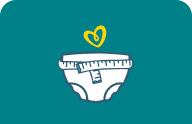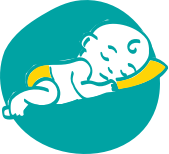Boy or Girl? 34 Old Wives’ Tales for Predicting a Baby’s Gender
Have you been wondering how to tell if you’re having a boy or a girl? You may have heard a few old wives’ tales for gender predictions, like morning sickness as a sign you’re having a girl or a lower baby bump indicating a boy. If you’re ready to know the sex of your baby before they arrive, it can be hard to wait until that ultrasound! Though not based on science, these folktales and stories passed down by generations are fun ways to distract yourself while you wait. We’ve rounded up some of the most common, interesting, and just plain silly old wives’ tales for predicting your baby’s gender!
What’s an “Old Wives’ Tale”?
In today’s world, the phrase and idea of an “old wives’ tale” is certainly outdated, but the origins are quite interesting. “Wives” actually refers to women in general, as it comes from the English word wif and the German word weib, both meaning “women.” The idea is that older women passed down stories, myths, superstitions, legends, and the like to younger generations, with many of these legends existing for centuries before writing, print, and literacy became the norm.
Some of these tales are based on morality and were published as fairytales and fables, while others center on women’s health and related themes, including pregnancy, puberty, and nutrition, for example.
These stories are part of our culture and shared human history. Though medical advances have proved many wrong, it’s fun to learn about old wives’ tales for gender prediction—especially as a distraction if you’re always wondering, am I having a boy or girl?
Fill in your info to get started:
This is a mandatory field.
Please select a due date!
Baby's Due Date*
How Do Old Wives’ Tales “Predict” Gender?
Many old wives’ tales were thought to “predict” gender, and you might have already heard of a few. Maybe someone has told you how the shape of your baby bump is a sign you’re having a boy or that your intense morning sickness means you’re having a girl. Of course, science has debunked these myths, but they’re still fun to hear!
So, no, old wives’ tales can’t really predict gender, but these legends were once the only way to try. Now we have a better shot at knowing the biological sex of a baby before birth, but if you haven’t quite made it to that ultrasound or just want to have a little fun, read on for some unscientific but entertaining ways to predict whether you’re having a girl or boy!
Old Wives’ Tales Gender Prediction: Pregnancy Symptoms
Many old wives’ tales for gender prediction center on typical early pregnancy symptoms or those symptoms you feel in your second or third trimesters. According to these stories and myths, morning sickness, cravings, heartburn, and even your blood pressure levels may reveal the gender of your baby!
1. Cravings
If you’re experiencing pregnancy cravings, pay attention to what you want to eat. This old wives’ tale suggests that having salty vs. sweet cravings can predict gender.
The Myth
Girl: Food cravings when pregnant with a girl consist of sweet things like chocolate, pastries, juice, and fruit.
Boy: Food cravings when pregnant with a boy tend to be saltier or savory items, such as meat, cheese, and other forms of protein.
The Reality
Food cravings may be linked to hormonal surges or to changes in the way the body absorbs nutrients during pregnancy. But there’s really no rhyme or reason behind specific food cravings, which tend to be very individual!
2. Heartburn
Heartburn is another common pregnancy symptom. Though having heartburn isn't the most comfortable experience, this old wives’ tale puts a spin on it to predict your baby’s gender.
The Myth
Girl: Constant or more intense heartburn is a sign you’re having a girl—and that she’ll be born with a full head of hair!
Boy: If you don’t experience much heartburn, that’s a sign you’re having a boy.
The Reality
This is another symptom linked to pregnancy hormones, which affect whether you experience heartburn. These hormones prompt your body to slow digestion and absorb nutrients better. Plus, pressure from your growing uterus on your stomach might also cause heartburn.
3. Morning Sickness
A well-known old wives’ tales for gender prediction relates to morning sickness, more officially known as nausea and vomiting of pregnancy (NVP). This is a fairly common symptom, though it doesn’t affect everyone. Will you have more nausea with a boy or girl? Let’s find out!
The Myth
Girl: If you’re experiencing a lot of morning sickness and feel ill, you’re having a girl.
Boy: If you don’t have any morning sickness or just mild nausea, it’s a boy.
The Reality
Of course, this is still just a fun old wives’ tale that tries to predict gender. However, a few studies have shown an association between experiencing severe morning sickness, called hyperemesis gravidarum (HG),and a greater likelihood of giving birth to a girl.
Medical experts haven’t pinpointed the exact cause of morning sickness, but many link it to higher levels of the “pregnancy hormone,” hCG (human chorionic gonadotropin), and estrogen.
4. Linea Nigra Length
Yes, even the linea nigra plays a role in gender prediction according to this old wives’ tale! The linea nigra is a dark line on your abdomen that appears during pregnancy and stretches down your belly bump to your pubic bone. Once yours starts to appear, take a closer look.
The Myth
Girl: You’re welcoming a baby girl if your linea nigra starts below your belly button.
Boy: If the linea nigra starts above your belly button, it’s a boy.
The Reality
You guessed it—pregnancy hormones may trigger skin changes, including the appearance of the linea nigra. These hormones stimulate melanin production, which can also cause other pigmentation. The way the linea nigra looks isn’t a gender prediction but reflects an increase in melanin.
5. Hair and Nails
If you’re blessed with that rumored pregnancy glow, you might notice that your hair and nails look extra healthy. Not everyone experiences this, but as the old wives’ tale goes, these changes predict your baby’s gender.
The Myth
Girl: If you notice your hair and nails feel brittle, dry, and thin, hello, baby girl!
Boy: If you have shiny, luscious, and healthy hair and nails, welcome to the world, baby boy!
The Reality
If you do experience that pregnancy glow, you can thank your hormones and increased blood flow. As a result, your skin may look plumper and smoother, and your hair a little shinier and stronger.
6. Acne
Pregnancy glow is one thing, but you might notice a different skin condition and start to develop acne. So, according to the old wives’ tale, is acne in pregnancy a sign of a girl or a boy?
The Myth
Girl: So, if you have oily skin while pregnant, is it a boy or girl? Yep, acne in pregnancy is a sign of a girl!
Boy: On the other hand, no extra pimples and dry skin during pregnancy mean it’s a boy!
The Reality
More hormones during pregnancy mean more sebum production, sebum being the oil in skin that's linked to acne. So, hormones might cause extra pimples on your face during pregnancy, regardless of whether you’re having a boy or girl.
7. Pregnancy Brain
Have you heard of “pregnancy brain?” This catchall term covers those typical pregnancy symptoms that you associate with your brain, such as forgetfulness, brain fog, fatigue, and clumsiness. So, does feeling sleepy during pregnancy mean a boy or a girl? This old wives’ tale has the answer!
The Myth
Girl: If you’re fairly alert and steady on your feet while pregnant, hello, baby girl.
Boy: Feeling tired and a little clumsy is a sign you’re having a boy.
The Reality
Medical experts have yet to confirm if “pregnancy brain” is a true condition, but there’s no doubt that many experience these symptoms while pregnant. Though studies show slight changes in the brain during pregnancy, conditions such as clumsiness, forgetfulness, and general spaciness probably have more to do with hormone fluctuations, fatigue, stress, and the like.
8. Insomnia
Have you been experiencing sleepless nights during your pregnancy? Whether you’re struggling to fall asleep or you keep waking up throughout the night, this old wives tale has its own theory. So, does insomnia in early pregnancy mean a boy or girl? The Myth Girl: If you experience insomnia at any point during your pregnancy, it means you’ll have a baby girl. Boy: If you’re sleeping well during pregnancy, a baby boy is on their way! The Reality According to medical experts, the quality of your sleep does not determine the gender of your baby. Insomnia during pregnancy is often caused by hormonal changes and physical discomfort, which can make it difficult to get restful sleep. If you’re experiencing pregnancy insomnia, try some of our tips to help you sleep better during pregnancy. Additionally, reach out to your healthcare provider if these methods aren't effective and sleep deprivation impacts your daily life. As well as using these fun old wives’ tales to predict gender, take our quiz to guess if you’re having a boy or a girl. Remember, it’s completely unscientific!
Old Wives’ Tales Gender Prediction: Body Changes
Other old wives’ tales look at body changes—both yours and your developing baby’s—to predict genders. So, keep an eye on the size of your adorable belly bump and pay attention to changes in your breasts and your baby’s heart rate.
9. Baby Bump Position
Possibly the most well-known old wives’ tale for gender prediction is the one based on how you carry your baby. So, if you’re wondering how to tell if you’re having a boy or girl, take a look at that baby bump once it starts to show.
The Myth
Girl: If you’re carrying high, as in your baby bump sits higher on your belly, it’s a sign you’re having a girl.
Boy: If you carry lower in your abdomen, closer to your pelvic bone, it’s a little baby boy.
The Reality
Your baby bump position is related to the size and positioning of your uterus. In early pregnancy, your uterus will sit lower in your abdomen; as the uterus starts to expand, it’ll sit higher and more forward. The size of your baby might also impact the positioning of your bump.
10. Baby Bump Shape
Not only the positioning but the shape of your baby bump can indicate gender, according to legend. So, boy belly vs. girl belly? This old wives’ tale knows all!
The Myth
Girl: A wide baby bump is a sign you’re having a girl.
Boy: If your bump looks narrow and pops forward, as if you have a basketball under your shirt, it’s a boy!
The Reality
The shape of your belly bump is related to your baby’s positioning inside your uterus. Babies that snuggle sideways will cause a wider bump, for example.
11. Feet Changes
This gender myth concerns your feet. Pregnancy produces many changes in your body, among them swollen feet. Girl or boy? Let’s find out!
The Myth
Girl: If your feet stay the same without any swelling, hooray, it’s a girl!
Boy: If you notice swelling in your feet, get ready to welcome a boy.
The Reality
Swelling is very common in pregnancy and can occur in the ankles, legs, and feet. It’s caused by extra fluid and pressure from a growing uterus.
12. Breast Size
As your body prepares for your baby, you’ll likely notice changes in your breasts. Pay attention to how they develop, as this old wives’ tale believes they’re sending you a gender prediction message.
The Myth
Girl: If your breasts get fuller but remain in proportion to your body shape, it’s a girl.
Boy: If your breasts become very large and heavy, especially in contrast to your body shape, you’re having a boy.
The Reality
Breasts grow and change throughout pregnancy. Early on, hormones like estrogen and progesterone will cause your breasts to grow, and later, they’ll continue to change as you start producing milk.
13. Changes to Nipples
Along with increased fullness in your breasts, changes in your nipples are common when you're pregnant. Do these changes mean a boy or girl? This old wives’ tale has some ideas.
The Myth
Girl: If the color of the areola (the area surrounding the nipple) stays about the same, say hello to your baby girl.
Boy: If the areola becomes darker in color, welcome to the world, sweet baby boy.
The Reality
Excess hormones can cause hyperpigmentation in various areas of your body, including your nipples. This extra melanin could cause your areolae to darken.
14. Urine Color
Yes, even the color of urine when pregnant with a boy or girl can inspire old wives’ tales! Pay attention to the color to predict your little one’s gender.
The Myth
Girl: If your urine is darker or a normal shade of yellow, you’re having a girl.
Boy: If your urine is brighter, it’s a sign you’re having a boy.
The Reality
When you're pregnant with a boy or girl, the color of your urine isn't affected by the gender of your baby. Rather, it stems from what you eat, drink, and ingest. Color changes can be triggered by certain foods or by your fluid intake; taking prenatal vitamins can also impact the hue you see when you pee. And what about the frequency; Does frequent urination in pregnancy mean a boy or girl? Surprisingly, there seem to be no old wives’ tales predicting this. In the early stages of pregnancy, frequent urination is generally caused by hormonal changes. In the later stages, it is typically due to the growing baby putting pressure on the bladder.
15. Weight Gain
Pregnancy weight gain is normal and a must when supporting a developing baby. But do you gain more weight with a boy or girl? This old wives’ tale has the answer.
The Myth
Girl: Where do you gain weight when pregnant with a girl? If the extra pounds appear throughout your body, especially in your bottom and thighs, it’s a girl.
Boy: If most of your weight gain happens in your belly, it’s a boy.
The Reality
Pregnancy weight gain is very individual and has more to do with your body type, pre-pregnancy weight, and history of weight gain.
Pregnancy Weight Gain Calculator
Fill out your details:
16. Partner’s Weight Gain
If you think you and your partner are linked in mind, body, heart, and soul, this old wives’ tale for gender prediction might be the one for you! According to this legend, it’s not just about your pregnancy weight gain, but your partner’s too!
The Myth
Girl: If your partner gains weight while you’re pregnant, it’s a sign you’re having a girl.
Boy: If your partner’s weight stays about the same, it’s a boy.
The Reality
Obviously, what happens in your partner’s body has nothing to do with your pregnancy, but they might be experiencing couvade syndrome. This is when a pregnant person’s partner feels the symptoms of pregnancy.
17. Baby’s Heartbeat
It’s thrilling to hear the swoosh of your baby’s heartbeat at your prenatal appointments. And according to this old wives’ tale, your baby’s heart rate can predict their gender!
The Myth
Girl: If your baby’s fetal heart rate is above 140 beats per minute (bpm), you're having a girl.
Boy: If your baby’s heartbeat is less than 140 bpm, then it’s a sign you’re having a boy.
The Reality
A normal heart rate for a fetus ranges from 110 to 160 bpm, and other factors like gestational age and your baby’s activity level may affect it.
18. Sleeping Sides
Sleeping while pregnant can be quite the challenge, so you’ll want to listen to your body and make yourself as comfortable as possible. But does your preferred side predict your baby’s gender? It does, at least according to this old wives’ gender tale!
The Myth
Girl: If you naturally fall asleep on your right side, hello, baby girl.
Boy: If you fall asleep on your left side, it’s a boy!
The Reality
You’ll need extra sleep when pregnant, which isn’t always easy to manage as your belly bump grows! Choose the side that feels most comfortable, which could change throughout the night. Just remember that side-sleeping is best, as sleeping on your back while pregnant can put pressure on your spine and back muscles and/or compress a major blood vessel.
19. Blood Pressure
If you're interested in this gender myth, think back to the last appointment with your healthcare provider before you became pregnant. If you can access your records, look for your blood pressure.
The Myth
Girl: If you had higher blood pressure before you became pregnant, get ready for a girl.
Boy: If your blood pressure didn’t change before getting pregnant, it’s a baby boy.
The Reality
High blood pressure outside of pregnancy can mean a lot of things, but revealing your future baby’s gender isn’t one of them. It’s best to talk with your healthcare provider if you have any concerns about blood pressure at any time in your life.
Old Wives’ Tales Gender Prediction: Methods
In addition to looking at pregnancy symptoms and body changes, there are other gender prediction methods you could try. You could take your chance on one of the most popular methods, the Chinese gender prediction chart, or give the legendary Mayan gender prediction a shot.
Unlike the gender predictions above, most of the following aren't accompanied by medical facts to set you straight, as these methods are totally for fun!
20. Ramzi Method
This old wives’ tale to predict gender has a more modern approach, as it relies upon ultrasound technology. When you have an ultrasound, ask your healthcare provider to help determine on which side of the uterus your baby decided to attach themselves.
The Myth
Girl: If your baby attaches to the right side of the uterus, she’s a sweet little girl.
Boy: If your baby chooses the left side of your uterus to attach to, hello, baby boy.
21. Nub Theory
The nub theory is another one that depends upon an ultrasound. Ask your healthcare provider to point out your baby’s genital tubercle, where you can see the genital nub (this can usually be detected starting at about 12 weeks). This old wives’ tale predicts gender by looking at the angle of the genital nub, which can provide some basis for an informed guess but is not 100 percent accurate.
The Myth
Girl: For girls, the genital nub usually lays parallel or angled less than 30 degrees from the spine.
Boy: For boys, the nub typically angles higher than 30 degrees from the spine.
22. Skull Theory
Yet another gender prediction requiring an ultrasound, the skull theory focuses on the shape of your baby’s developing skull. Ask your healthcare provider to show you your little one’s skull to see if it appears rounded or blocky.
The Myth
Girl: If your baby has a rounded skull, she’ll be a little girl.
Boy: If your baby’s skull isn’t quite as rounded, you’re having a boy.
23. Mayan System
A truly ancient method inspiring an old wives’ tale, the Mayan system of gender prediction uses the parent’s birthday. The Mayans would look at the year of the mother’s birth and the year the baby is due to formulate a gender prediction.
The Myth
Girl: If both years are even or odd, prepare for a girl.
Boy: If one year is even and the other odd, you’re having a boy.
24. Chinese Gender Prediction
One of the most popular gender prediction methods involves using the Chinese Gender Prediction Chart. You’ll use a chart to plot the mother’s age at conception and the baby’s month of conception.
The Myth
Girl: If on the chart the mother’s age and conception month intersect to indicate a girl, you’ll see something that indicates that gender, like the word “girl” or a shade of pink.
Boy: If the chart indicates a boy, it might say “boy” or be a shade of blue.
Old Wives’ Tales Gender Prediction: Tests
How to predict a baby’s gender? Besides the gender myths above, other stories and traditions use a simple test to reveal if you’re having a boy or girl. From eating garlic to the classic wedding ring gender test, these old wives’ tales are all just for fun and don’t come with any revealing truths. Enjoy!
25. Baking Soda Test
This fairly simple test involves peeing in a cup (and you thought you were done with that after taking a pregnancy test!). All you need to do is pee into a cup and add two tablespoons of baking soda.
The Myth
Girl: If you’re having a girl, the mixture will stay flat.
Boy: If you’re having a boy, the mixture will fizz.
26. Wedding Ring Gender Test
For this old wives’ tale gender prediction test, you need a strand of your hair and your wedding ring (or a favorite ring you wear regularly). Ask one of your friends to hold the ring dangling from your strand of hair over your belly, keeping it steady. After it’s steady, notice how it starts to move!
The Myth
Girl: If the ring moves in circles, it’s a sign you’re having a girl.
Boy: If you’re having a boy, the ring will move from side to side.
27. Pencil Test
This old wives’ tale for gender prediction is similar to the hair and ring test, but it goes a little further to predict the gender of all your children, whether you’re currently pregnant or not. You’ll tie a string to the top of a very sharp pencil. Ask a friend to dangle the string with the pencil lead pointing down and over your wrist (either wrist will do), arm flat on a surface, and palm facing up. It’ll take a moment for the pencil to steady, but once it does, it’ll start to sway. Watch for the rhythm.
The Myth
Girl: If the pencil moves side to side across your wrist, it indicates a girl.
Boy: If the pencil moves up and down over the length of your arm, it means a boy.
What makes this old wives’ tale even more fun is that the pencil will center itself and change its pattern for each child, revealing and/or predicting the gender of all your children, past and future. For example, if the pencil first moves side to side, then centers itself, then moves side to side again and recenters, then moves up and down before stopping completely, it indicates that you will have (or currently have) two girls and one boy, in that order.
28. Eye Test
This old wives’ tale presents an easy way to predict your baby’s gender. All you need to do is look at your reflection in a mirror and focus on your pupils, watching for any changes.
The Myth
Girl: If your pupils remain the same, hello, baby girl.
Boy: If your pupils start dilating (get bigger), you’re having a boy.
29. Garlic Test
Hmmm, how to tell if you’re having a boy or girl? To check out this gender myth, you’ll probably need to love (or at least tolerate) the taste and smell of garlic. Here's what to do: eat a few cloves of raw garlic and wait an hour or so.
The Myth
Girl: If you don’t smell of garlic after eating it, it’s a sign you’re having a girl.
Boy: If you smell like garlic, it's a boy, especially if it sweats out through your pores.
30. Baby Hair Test
This old wives’ tale gender test works if your new baby has an older sibling. You’ll need to wash your youngest child’s hair, comb it, let it air dry, and look for the cowlick on the back of their head.
The Myth
Girl: If your youngest child’s hair naturally swirls clockwise away from the head, the next baby will be a girl.
Boy: If their hair naturally swirls counterclockwise, the next baby will be a boy.
31. Drain Cleaner Test
This old wives’ tale isn’t all that old since it involves liquid drain cleaner, which wasn’t around during your great-great-grandmother’s time. This test mixes your urine with liquid drain cleaner to put a classic spin on it. Yes, it’s a little weird, but it made the list!
The Myth
Girl: If the mixture turns green, congratulations, it’s a girl!
Boy: According to this myth, the color of urine when pregnant with boy is blue!
32. Red Cabbage Test
If you didn’t think combining your urine with drain cleaner was strange enough, try mixing it with cabbage water. Chop a head of red cabbage and put it in a bowl. Pour boiling hot water over it and wait 10 minutes. Strain the water equally into two glass containers and mix equal parts of your urine into it.
Girl: You’re having a girl if the water turns violet.
Boy: It’s a boy if the water turns red or pink.
Signs You’re Having a Boy vs. Girl: Involve Your Partner!
Of course, you can involve your partner in any or all of the silly old wives’ tales above, but here are a few methods that require your partner's participation to predict your baby’s gender.
33. Key Test
If you want to involve your partner in an old wives’ tale gender predictor, don’t read the results of this one yet! Just have your partner place a key on the table. Pick up the key and ask your partner to read the results below—serious spoilers ahead, so no peeking!
The Myth
Girl: If you pick the key up by its narrow end, it’s a girl!
Boy: If you pick the key up by its rounded top, welcome to the world, baby boy!
34. Fork or Spoon Test
You’ll need a fork, spoon, and two chairs for this one. Ask your partner to tape a spoon under the seat of one chair and a fork under the seat of the other. Without knowing which chair has which utensil under it, pick a seat!
The Myth
Girl: If you choose the seat with the spoon, you’re having a girl.
Boy: If you chose the seat with the fork, it’s a baby boy.
When Can an Ultrasound Show Your Baby’s Sex?
“Am I having a boy or girl” is an exciting question to ponder during your pregnancy journey. For many, the mid-pregnancy ultrasound at about 18 to 20 weeks reveals the big news. Waiting this long can be tough if you're super eager to know if it’s a boy or girl!
Using old wives’ tales to predict your baby’s gender is a fun and silly way to distract yourself while you wait, but, of course, these aren’t accurate, medical, or scientific. However, ultrasounds can also be misinterpreted, so there’s truly no completely accurate gender predictor.
Still, an ultrasound is your best bet. Let your provider know beforehand if you’d like to learn your baby’s sex (so they don’t forget or reveal it to you if you don’t want to know)!
The Bottom Line
How to tell if you’re having a boy or girl? Learning the sex of your baby is an exciting pregnancy milestone, so, understandably, you're eager for that ultrasound! To keep your mind occupied while you wait, have fun with some of these old wives’ tales to predict your baby’s gender.
Though a unique part of our history and storytelling traditions, these gender myths are now just for fun and entertainment. Enjoy them!
One thing that’s definitely not a myth is how many diapers a baby uses, which might surprise you! Reward yourself for those diapers and wipes purchases by downloading the Pampers Club app—the perks you’ll earn are the real deal, not an old wives’ tale.
Join a World of Support
through Pregnancy and Parenthood.
TRACK WITH TOOLS
LEARN WITH EXPERTS
GET REWARDED












